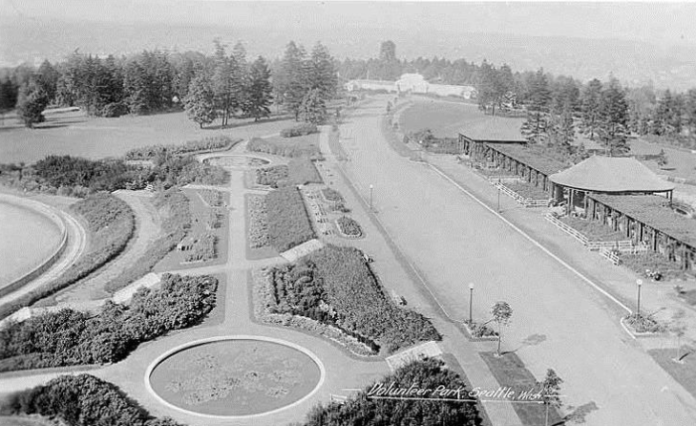Seattle is poised to get three new city landmarks. At a meeting of the Seattle City Council yesterday, councilmembers approved the landmarks as part of their post-budget back-to-regular business agenda. Only five councilmembers were present at the session.
The Council also signaled approval of funding policies that will guide the Homelessness Prevention and Housing Stability Services Program through 2018.
New City Landmarks
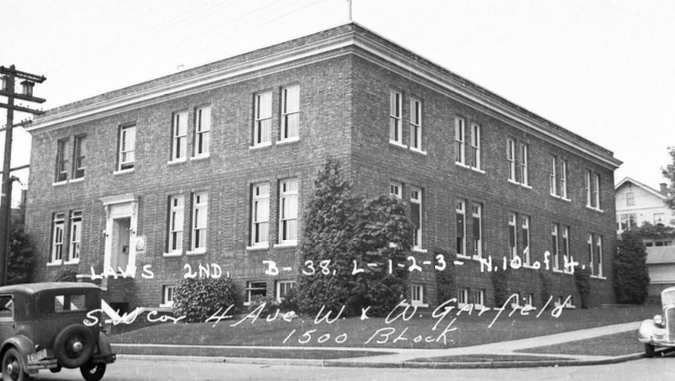
The Landmarks Preservation Board designated the Pacific Telephone and Telegraph Garfield Exchange (1529 4th Ave W) as a landmark in April due to its cultural significance and distinctive architectural features. Built in 1922 and expanded in 1929, the building served as a local telephone exchange to connect customers using a switchboard. At the time, phones were directly wired from their place of use to a local phone exchange. Switchboard operators had to patch phone calls through to the receiving caller’s line.
Pacific Telephone and Telegraph constructed three exchange buildings in a similar Beaux Arts and Classical Revival style to the Garfield Exchange in the 1920s. The Landmark Preservation Board says that the Garfield Exchange building is distinguished from its counterparts because it “has a more elaborate east facade, with a projecting entry porch with symmetrical opposing stairs, and an entry surround embellished by ornamental terra cotta.”
The building is currently owned by the city, specifically the Seattle Public Library, which had used the building for book storage and is now gearing up to sell the building. The building sits directly opposite the Queen Anne branch of the library.
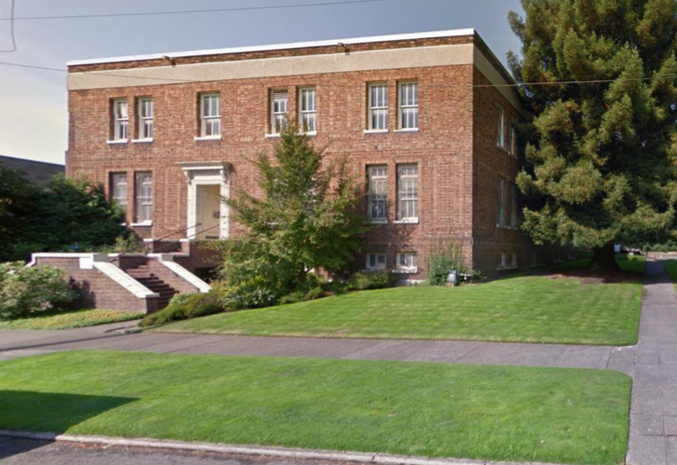
The Landmarks Preservation Board noted that Garfield Exchange had a long life:
The … building remained in service through the early 1960s. It was abandoned by its owner, Pacific Northwest Bell, in early 1967, as the company no longer needed the equipment and found that the “demolition costs and restrictive zoning offset the commercial value of the land….After this initial appraisal…the phone company asked the Queen Anne Community Council to find an organization acceptable to the community that could use the building. The council rejected several commercial ventures in favor of the library” (Seattle Times, 9.6.1978).
Landmark preservation controls will apply to the site building exterior.
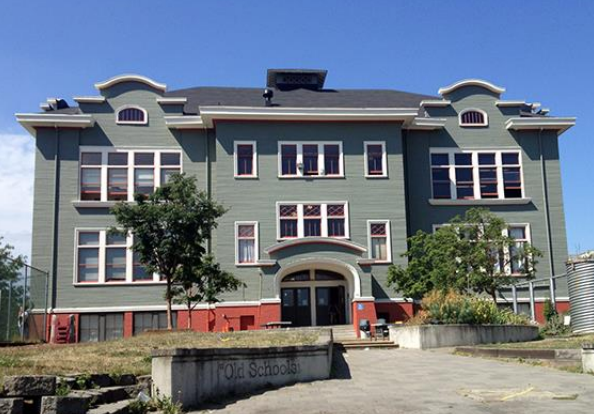
The University Heights School (5031 University Way NE) is a well known community institution in the University District. Once a school, the building has become a community center for many neighborhood events and houses local organizations. The process for landmark designation began in 1977 and deliberations on the terms of controls continued through to 2011 for the community center and 2016 for the park and parking lot area. The building was originally constructed in 1902 and designed by Bebb & Mendel Architecture, and later saw an addition in 1908 designed by James Stephen. Preservation controls will apply to the site, building exterior, and the hallways and stairs inside.
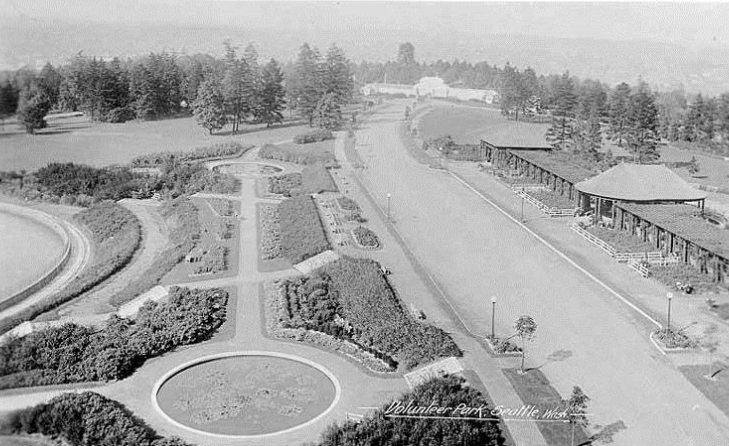
Volunteer Park (1400 E Prospect St) is also set for landmark designation. Design by the famed landscape architects John Charles Olmsted and Frederick Law Olmsted, Jr., the park was originally nominated for designation in 2011. The park is nestled into the northern frame of Capitol Hill and known for its winding paths, expansive reservoir, rustic water tower, Art Moderne museum, and English-style conservatory. It was purchased by the City of Seattle in 1876.
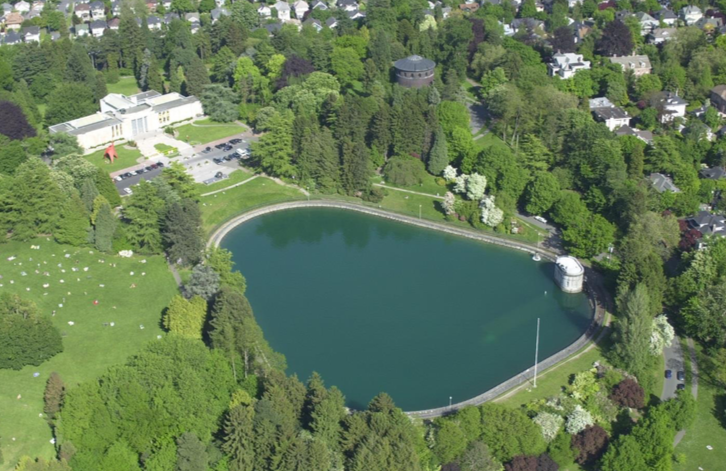
In the Landmark Preservation Board’s report, the historic preservationists wrote at length about the history of the park and its importance to Seattle.
Volunteer Park is an urban park designed in the naturalistic, pastoral/picturesque American romantic style that is closely associated with the Olmsted firm. The elements of this style include irregular open lawns bordered by shrub and tree plantings, carefully framed and modulated views, one or more circulation loops, and areas intended for crowds and social interaction which are treated in a more geometric and formal manner.
The Olmsted Brothers retained Olmsted, Sr.’s belief that people would receive psychological benefits from being surrounded by and contemplating natural scenery. This view was widely-held during the late 19th and early 20th centuries and continues to have adherents. As a result, Olmsted-designed parks emphasize space for non-programmed, passive recreation and flexible activities. Volunteer Park’s open, interconnected lawns and bordering masses of trees express that design philosophy.
Like New York’s Central Park, Volunteer Park incorporates a reservoir. It is one of the first two built as part of the City’s Cedar River water supply system. The park also includes the Seattle Asian Art Museum, a conservatory and related support facilities, a water storage standpipe/observation tower, a bandstand, a shelter house, a play area with wading pool, and tennis courts.
Volunteer Park plays a dual role as a destination park within a citywide park system, and as a neighborhood park in one of Seattle’s most prominent neighborhoods. The plantings reflect this formal and informal character. The extensive variety of non-native plant species and rows of trees emphasize formality while incorporating remnant native trees and clustered informal plantings to define irregular open spaces. While most of the plants are not native, they are arranged in a naturalistic way that makes them appear to belong to a native matrix, but with added variety and color.
Some features of the park have already been listed as landmarks, but the new designation will control the site and exteriors of most buildings. Volunteer Park is about to undergo a period of rapid change throughout the next few years, with a $49 million upgrade and expansion planned for Seattle Asian Art Museum, which will close the museum for two years, as well as a revamp planned for the Volunteer Park Amphitheater, which hosts programming in the summer and is showing its age.
The reservoir at Volunteer Park is not used for drinking water, because it is not covered, and has not been retrofitted to become earthquake proof. Seattle Public Utilities is expected to surplus the reservoir, opening up another opportunity for change in the park.
Homelessness Prevention and Housing Stability Services Program
Earlier this year, Seattle voters approved the Seattle Housing Levy which could serve up to 7,000 households over the life of the levy. Yesterday, the Council adopted a funding policy that guides one arm of the Housing Levy known as the Homeless Prevention and Housing Stability Services Program. The purpose of the program is to serve “families and individuals who are at risk of homelessness or experiencing homelessness.” In total, 4,500 households could benefit from the program by targeting measures that provide housing stabilization support services and financial assistance. The scope of this includes things like services that provide assistance in the search for housing search, landlord negotiations, reviewing leases, and financial coaching.
The adopted funding policy outlines specific requirements for households to be eligible to participate:
- There must be documented evidence that the household is experiencing homelessness or at risk of homelessness. Couch surfing and “doubled households” may constitute a household at risk of homelessness and households must reside in Seattle before participating in the program. Homeless households must be in fact homeless and referred to the program by the regional Coordinated Entry for All system in King County.
- The household must be at 50% of the area median income or below.
- The household must be unable to attain adequate financial resources or stable housing without assistance.
- Any financial assistance must be limited to 12 months during a 36-month period.
Program funds are restricted to certain types of financial assistance, which include:
- Regular rent;
- Move-in costs like first and last month’s rent, security deposits, fees associated with a background check, and utility deposits;
- Payment of legal and interpretative language fees to prevent eviction;
- Any staffing and service delivery costs to provide housing stabilization services; and
- Transportation assistance.
Levy funds may be allocated toward contractors that provide housing stabilization services, assistance to prevent or address homelessness, or other services that involve data management related to the program.
The Human Services Department and Office of Housing will be responsible for regular reporting. A full report on the Housing Levy will be due to the City Council each year. Specific data on demographics (e.g., race, gender, ability, income, and household makeup), average amount of assistance per household, households served, and performance outcomes (e.g., statistics on household attaining permanent housing or moving to other programs) will need to be analyzed in the reports to provide a better understanding on those served and the efficacy of the program.
Stephen is a professional urban planner in Puget Sound with a passion for sustainable, livable, and diverse cities. He is especially interested in how policies, regulations, and programs can promote positive outcomes for communities. With stints in great cities like Bellingham and Cork, Stephen currently lives in Seattle. He primarily covers land use and transportation issues and has been with The Urbanist since 2014.

